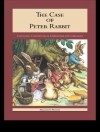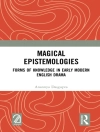This five-volume series, British Women’s Writing From Brontë to Bloomsbury, 1840-1940, historically contextualizes and traces developments in women’s fiction from 1840 to 1940. Critically assessing both canonical and lesser-known British women’s writing decade by decade, it redefines the landscape of women’s authorship across a century of dynamic social and cultural change. With each of its volumes devoted to two decades, the series is wide in scope but historically sharply defined.
Volume 1: 1840s and 1850s inaugurates the series by historically and culturally contextualizing Victorian women’s writing distinctly within the 1840s and 1850s. Using a range of critical perspectives including political and literary history, feminist approaches, disability studies, and the history of reading, the volume’s 16 original essays consider such developments as the construction of a post-Romantic tradition, the politicization of the domestic sphere, and the development of crime and sensation writing. Centrally, it reassesses key mid-nineteenth-century female authors in the context in which they first published while also recovering neglected women writers who helped to shape the literary landscape of the 1840s and 1850s.
Daftar Isi
1. Introduction: Adrienne E. Gavin and Carolyn W. de la L. Oulton.- 2. ‘Pleasant, easy work, -& not useless, I hope’: Harriet Martineau as a Children’s Writer of the 1840s:
Valerie Sanders.- 3. ‘Powerful beyond all question’: Catherine Crowe’s Novels of the 1840s: Ruth Heholt.- 4. Women in Service: Private Lives and Labour in Mary Howitt’s
Work and Wages: Erin D. Chamberlain.- 5. Confronting the 1840s: Christian Johnstone in Criticism and Fiction: Joanne Wilkes.- 6. Jane Eyre, Orphan Governess: Narrating Victorian Vulnerability and Social Change: Tamara S. Wagner.-
7. ‘I was in the condition of mind to be shocked at nothing’:
Losing the Plot in
Wuthering Heights: Carolyn W. de la L. Oulton.- 8. Anne Brontë: An Unlikely Subversive: Kristin A. Le Veness.-
9. The Female Voice and Industrial Fiction: Elizabeth Gaskell’s
Mary Barton: Carolyn Lambert.- 10. The Age of the Female Novelist: Single Women as Writers of Fiction: Sharon Connor.- 11. ‘Excluded from a woman’s natural destiny’: Disability and Femininity in Dinah Mulock’s
Olive and Charlotte M. Yonge’s
The Daisy Chain: Clare Walker Gore.- 12. ‘The eatables were of the slightest description’: Consumption and Consumerism in
Cranford: Anne Longmuir.- 13.‘There never was a mistress whose rule was milder’: Sadomasochism and Female Identity in Charlotte Brontë’s
Villette: Abigail Boucher.- 14. Cultivating King Arthur: Women Writers and Arthurian Romance in the 1850s: Katie Garner.- 15. ‘[T]he work of a she-devil’: Sensation Fiction, Crime Writing, and Caroline Clive’s
Paul Ferroll: Adrienne E. Gavin.- 16. ‘[Your novel] quite gives me a pain in the stomach’: How Paternal Disapproval Ended Julia Wedgwood’s Promising Career as a Novelist: Sue Brown.- 17.
Adam Bede and ‘the green trash of the railway stall’: George Eliot and the Lady Novelists of 1859:
Gail Marshall.
Tentang Penulis
Adrienne E. Gavin is Emeritus Professor of English Literature and Co-founder and Honorary Director of the International Centre for Victorian Women Writers (ICVWW), Canterbury Christ Church University, UK. She is also an Honorary Academic at the University of Auckland, New Zealand. Her publications include Dark Horse: A Life of Anna Sewell (2004), critical editions of Paul Ferroll, The Blue Lagoon, Black Beauty, and The Experiences of Loveday Brooke, Lady Detective and edited collections including Writing Women of the Fin de Siècle: Authors of Change (2012, co-edited with Carolyn Oulton).
Carolyn W. de la L. Oulton is Professor of Victorian Literature at Canterbury Christ Church University, UK and Co-founder and Director of the ICVWW. Her most recent publications include Below the Fairy City: a Life of Jerome K. Jerome (2012), Dickens and the Myth of the Reader (2017) and Accidental Fruit (2016).












